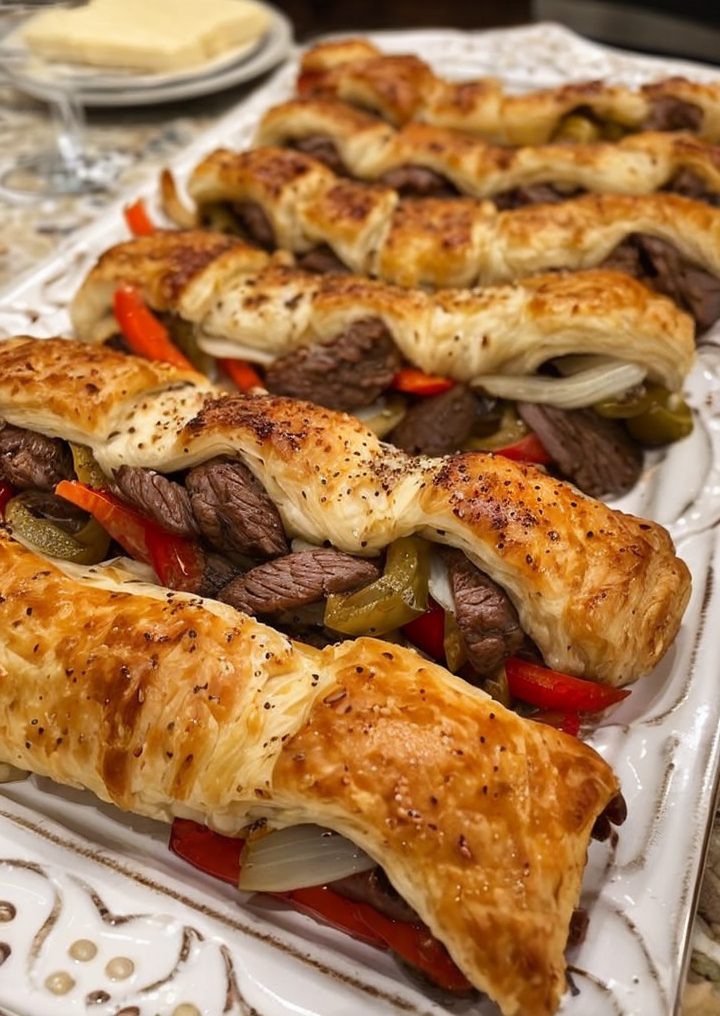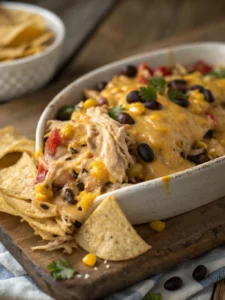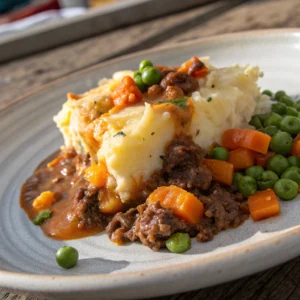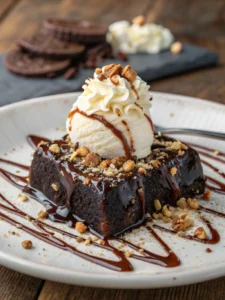Philly Cheesesteak Crescent Rollups: An Irresistible Twist on a Classic
Imagine the rich flavors of a Philly Cheesesteak packed into a convenient, flaky crescent roll—this is exactly what you’ll get with these Philly Cheesesteak Crescent Rollups. Combining tender slices of beef, sautéed onions, and peppers coated in creamy melted cheese, each bite promises a harmonious blend of classic and contemporary tastes. Ideal for casual dining, parties, or a quick snack, these rollups are both visually delightful and mouthwateringly delicious.
Perfect for highlighting the zest and hearty texture of traditional cheesesteaks, these rollups offer an effortless way to enjoy all your favorite elements in a bite-sized package. The savory mix of juicy steak, tangy cheese, and buttery crescent rolls is truly irresistible. Whether you’re an aficionado of classic Philly cuisine or simply looking to indulge in something extraordinary, these rollups are bound to captivate your taste buds.
Quick Recipe Highlights
- Flavor Profile: A delectable combination of savory beef, creamy cheese, and buttery crescent rolls melded together, enhanced by the sweetness of caramelized onions and peppers.
- Texture: Experience the perfect contrast of a crunchy outer layer with a gooey, cheesy center, layered with soft, tender pieces of beef and veggies.
- Aroma: Indulge in the aroma of freshly baked rolls filled with savory steak and cheese, combined with the inviting scent of sautéed onions and peppers.
- Visual Appeal: Crisp golden-brown rolls with a slightly oozing cheesy interior create an inviting presentation, appealing to the senses even before you take the first bite.
- Skill Level Needed: Simple techniques make this ideal for all cooking levels. Roll, bake, and enjoy without the complexity of traditional Philly cheesesteaks.
- Special Equipment: Use basic kitchen essentials—a baking sheet and skillet—making it accessible for any home kitchen.
Recipe Overview
- Difficulty Level: Designed for beginners, this recipe requires minimal cooking skills, yet the results are comparable to seasoned culinary creations, making it both easy and rewarding.
- Category: These rollups fall under appetizers, snacks, or even a casual meal option, serving as versatile delights for any dining occasion.
- Cuisine: A modern American twist rooted in the traditional flavors of the celebrated Philadelphia street sandwich.
- Cost: Economically favorable; uses accessible ingredients that won’t break the bank, perfect for budget-friendly cooking.
- Season: While great all year round, they are especially comforting during cooler months when hearty, warm foods reign supreme.
- Occasion: These rollups are suitable for game nights, casual get-togethers, family dinners, or simply enjoying whenever you crave something delightful yet easy to make.
Why You’ll Love This Recipe
The fusion of textures and flavors in these Philly Cheesesteak Crescent Rollups makes them a crowd-pleaser bound to satisfy any palate. The harmonious marriage of juicy beef, melted cheese, and buttery crescent creates a heavenly mouthful every time. Whether serving these as appetizers or fun snacks, the inviting flavors make them an ideal choice for any meal.
Convenience is at the heart of this recipe, streamlining the beloved cheesesteak into a straightforward, quick-preparation dish. By using pre-prepared crescent rolls and straightforward cooking steps, you save on time while ensuring seamless execution, perfect for those busy weeknights or impromptu gatherings.
Indulge without the guilt, as these rollups can be adapted to support a balanced diet. Easily control portion sizes, and incorporate leaner beef options or low-fat cheese as needed. This flexibility offers a delicious yet health-conscious indulgence.
Elevate social gatherings with these conversation-starting delights. An apparent hit among friends, they pair seamlessly with many accompaniments and beverages, enhancing the social dining experience. Plus, their portable nature makes them excellent for potlucks or outdoor events.
From kitchen novices to culinary experts, anyone can craft these rollups with minimal ingredients and effort. The low price point and simple ingredient list make it approachable for all cooking levels, ensuring accessibility and satisfaction without straining your budget. Perfectly frugal, yet deeply satisfying.
Historical Background and Cultural Significance
The Philly cheesesteak originated in the early 20th century in Philadelphia, Pennsylvania. Developed by Pat Olivieri, a hot dog vendor, the shift to a sizzling steak sandwich rapidly gained acclaim, quickly anchoring itself in American comfort food culture.
Deeply embedded in cultural gatherings, the cheesesteak represents not only a delicious treat but a shared tradition across the East Coast of the United States. Celebrations, sports events, and citywide festivals often feature this hearty delight, reflecting its cultural progression and adaptation beyond city dining.
Over time, the simplification and diversification of this beloved sandwich have seen adaptations ranging from vegan options to this more portable crescent roll variant, maintaining core flavors while embracing culinary creativity. It demonstrates the adaptability of culinary traditions, evolving with dietary trends and preferences.
Variations thrive from coast to coast, incorporating everything from alternative vegetables to spicy additions, all helping fuse this city staple into national gastronomy. These creative expressions ensure that while origin stories remain cherished, evolution continues to celebrate diverse palates across regions.
Ingredient Deep Dive
Beef, a star component, ties deeply with Philly cheesesteak origins. Traditionally, ribeye adds rich flavor, but adaptable cuts like sirloin offer leaner alternatives. It’s marbled fat content supports maximum tenderness—a hallmark of authentic cheesesteaks.
Peppers and onions together define its iconic taste. Sweet bell peppers soften the flavor, while onions add a delicate sweetness when caramelized, creating a flavor balance that’s emblematic in their street food roots.
Provolone or alternatively, American cheese, commonly accompanies cheesesteaks for creamy indulgence. While provolone’s sharpness elevates flavor, American cheese offers a nostalgic note, known for its smooth melt and youthful appeal.
Store leftovers in airtight containers; ideal for next-day enjoyment. While refrigerating prolongs freshness, reheating crisps the rollups again—preferably using an oven or air fryer. For ultimate freshness, prepare ingredients separately a day in advance.
Common Mistakes to Avoid
- Overloading rolls with filling may result in breakage during baking. Moderation ensures seamless cooking and balanced flavors.
- Improperly sealed edges promote leakage. Pinch dough carefully to prevent cheese from escaping during baking.
- Skipping preheating affects texture; ensure ovens reach optimal temperature before baking.
- Inadequate cooking heat causes steaks to be steamed, not seared. Aim for high-heat browning to seal in juices.
- Using pre-chopped onion/pepper mixes may lack freshness. Freshly slice for optimal flavor.
- Burned bottoms indicate poorly rotated trays. Turn halfway through for even baking.
- Exact cooking times vary; keep vigilant during final minutes to prevent over-browning.
- Insufficient cooling time post-baking may lead to messy servings; cool slightly to allow cheese to set before serving.
Essential Techniques
Proper dough handling ensures successful baking. Consistently sized portions facilitate even cooking—overworking dough risks a dense roll, whereas gentle folding paired with a light touch ensures flakiness.
To achieve well-browned steak, maintain high skillet temperatures—avoid overcrowding to allow effective searing without excess moisture. Failure to do so results in boiled meat, diminishing flavor potential.
Visual cues are paramount during baking; golden tops signify readiness. Underbaked dough lacks appeal, whereas excessive browning risks drying filling. Master optimal baking through attentiveness and practice.
Pro Tips for Perfect Philly Cheesesteak Crescent Rollups
Balance moisture within the filling by properly searing meat and cooking veggies until just tender. Balancing avoids sogginess or dryness within rolls.
Invest in high-quality provolone for a classic twist. While American cheese remains a convenient substitute, artisanal cheeses bring refined flavors to the forefront.
For variation, infuse filling with hot sauce or pepper flakes. Balanced heat complements cheese while adding dimension without overpowering authenticity.
Ensure filling cools slightly before rolling. Hot fillings fight dough adherence, introducing structural weakness.
Experiment with brushing egg wash onto dough tops; it encourages a gleaming finish, elevating both appearance and taste.
Prioritize preheating ovens to stated temperatures. Variances affect bake quality, thus impacting texture and final appearance.
Variations and Adaptations
Regional variations spark interest—consider incorporating locally available veggies or spices to reflect authentic area tastes, celebrating culinary diversity.
Adapt for seasons with light veggie fillings—spring’s asparagus, summer’s zucchini, and winter’s root veggie trend transcend frozen food confinement.
Dietary needs can be seamlessly integrated—opt for gluten-free doughs, vegan cheese substitutes, or lean meats, accommodating dietary missions.
Flavor explorations are key—consider incorporating fresh herbs like basil or oregano. Unexpected elements infuse modern spins without abandoning traditional roots.
Altering dough handling elevates texture; choose whole-grain or rustic crescents for an adventurous twist, with heartier options enhancing health ethos.
Serving and Presentation Guide
Opt for elegant plating—slice diagonally to showcase colorful fillings and cheese pulls. Consider flat serving platters to prevent rollups merging.
Explore garnishing options—parsley flakes or crisp lettuce raise visual appeal, complementing flavors, ensuring cohesion across servings.
Pair with sides from Philly culture; French fries, coleslaw, or small salads emphasize regional influences, offering accompaniment authenticity.
Modernize serving—integrate pairings from global cuisines, like pickled veggies or spicy aioli, adding contrast and depth to the meal.
Ensure portions align with occasions—larger servings suit formal dinners, whereas smaller rollups enhance party buffets.
Wine and Beverage Pairing
A full-bodied red wine, like a Zinfandel or Syrah, matches nicely with the robust steak flavors—fruity notes highlight subtle seasoning undertones.
For non-alcoholic options, iced herbal teas refresh palettes, balancing rich filling flavors with crisp adjuncts.
Consider coffee pairings with light-bodied blends or cold brews; the roast’s richness complements cheese notes without overshadowing them.
Monitor serving temperatures—room-temperature drinks soften rollups’ savory undertones, while chilled selections contrast but enhance flavors.
Provide cold beer selections; pilsners cleanse palates between bites, resetting taste profiles effectively.
Storage and Shelf Life
Room-temperature storage within tightly sealed containers maximizes freshness—1-2 days’ viability extends enjoyment beyond initial preparation.
For longer durations, refrigeration up to 5 days retains quality. Avoid overcrowding; use parchment paper between layers for maintained structure.
Seek airtight containers that retain moisture levels, preserving flavor integrity while discouraging unwanted aromas.
Spoilage appears as discoloration, sogginess, or hardening fillings. Promptly discard affected portions to ensure quality and enjoyment.
Effective reheating involves preheated ovens at moderate temperature; crisp textures return, enhancing the eating experience beyond the initial serving.
Freezing requires careful placement, minimizing air exposure. A 3-month limit ensures gourmet results even post-defrosting, preserving the culinary essence admirably.
Make Ahead Strategies
Divide ingredients for staged preparations—pre-chop veggies, pre-cook beef, facilitate swift assembly on serving day without rushing elements.
Short-term storage of components separately maintains quality, ensuring freshness persists even between preparation steps.
Monitor quality post-make-ahead; enriched doughs maintain textures longer, while dry counterparts may exhibit quicker declines.
Assemble components just before baking, retaining maximum right-from-the-oven freshness, crucial in optimal crescent presentation.
Reheating carefully prevents dryness—moderate oven temperatures consistently deliver well-rounded bite post-rest.
Integrate fresh herbs post-reheat to add color and vibrance, enhancing visual appeal upon serving.
Scaling Instructions
Halving demands keen ingredient measurements to ensure svelte proportions, crucial in maintaining consistent flavor profiles.
Expanding to serve larger audiences requires parallel oven setups or staggered bakes, promoting seamless continuity across presentation lines.
Equipment considerations for larger batches may involve upgrading trays or using commercial options, enhancing process efficiencies and fluidity between steps.
Timing tweaks align with increased batch sizes; anticipate extra seconds during cooling periods to retain structural benchmarks.
Store excess in accessible portions, preventing waste—airtight approaches tailored to preservation ensures longer, enduring enjoyment beyond a single meal.
Nutritional Deep Dive
This dish balances macronutrients effectively; protein-heavy fillings fueled by beef, while cheese contributes both fats and energy, spurring dining satisfaction.
Micronutrients from vegetable selections bolster overall dietary advantages—Antioxidants within peppers promote immune health while onions offer anti-inflammatory compounds.
Moderate portion sizes accommodate dietary consciousness, framing servings within mindful culinary practice while acknowledging indulgence.
Navigate health awareness by incorporating nutrient-dense options: whole-grain dough substitutes or additional vitamin-packed greens exemplify adaptability.
Analyze proportions to correlate with dietary goals—well-balanced bites offer benefits beyond satiation, supporting weight management values.
Dietary Adaptations
Gluten-free methods rely on specialty dough; vitreous flour forms substitutions without compromising hallmark crescent characteristics, adapting flour-free experiences.
Dairy-free selections embrace plant-based cheeses crafted for authentic melting quality, ensuring expectations meet without sacrificing creamy nostalgia.
Vegan preparations benefit from seasoned meats like portobello mushrooms or jackfruit, matching steak flavors when handled skillfully.
Low-carb construction replaces conventional doughs with keto-friendly alternates, prioritizing healthy fats and proteins over traditional floured elements.
Keto options thrive here—cognizant cheese choices paired with meat selections ensure meal balance compliant with ketogenic standards, supporting dieters’ pathways.
Paleo adjustments shift focus towards preservative-free elements, drawing flavors from earth-rooted spices and natural vegetable bondings.
Low-FODMAP transforms ingredients, introducing pre-tested cheese and meat selections, carefully curated to support effective digestion processes.
The Recipe
Philly Cheesesteak Crescent Rollups
Serves: 8
Prep Time: 15 mins
Cook Time: 20 mins
Total Time: 35 mins
Kitchen Equipment Needed
- Skillet
- Baking Sheet
- Spatula
- Knife
- Cutting Board
Ingredients
- 1 pound beef steak, thinly sliced
- 1 tablespoon oil
- 1 small onion, sliced
- 1 small green bell pepper, sliced
- 8 crescent roll dough sheets
- 8 slices of provolone cheese
- Salt and pepper to taste
Directions
- Preheat oven to 375°F (190°C).
- In a skillet, heat oil over medium-high heat, add steak slices, season with salt and pepper, and cook until browned. Remove and set aside.
- In the same skillet, add sliced onions and bell pepper, sauté until softened.
- Roll out crescent dough triangles on a baking sheet.
- Place a slice of provolone cheese on each dough piece, followed by steak, onions, and peppers.
- Roll up the dough starting from the wide end and place on the baking sheet.
- Bake in a preheated oven for 12-15 minutes or until golden brown.
- Let cool slightly before serving.
Recipe Notes
- Substitute provolone with American cheese for a creamier texture.
- Experiment with additional vegetables like mushrooms or jalapeños for more flavor.
Troubleshooting Guide
For texture issues, adjust baking times to prevent sogginess—introduce venting cuts into dough for steam release, ensuring thorough cooking.
Balance flavors through revised seasoning levels; vary salt application across components to unify tastes cohesively across all rollups.
Temperature inconsistencies during cooking? Confirm heating elements function without obstructions, impacting cooking parity.
Overcome equipment challenges confidently—maintain utensil cleanliness; residue buildup falsifies cooking signals, recalibrating your cooking prospects correctly.
Ingredient substitutions require thoughtfulness: consult equivalency charts to ensure harmonious transitions between components within cooking practices.
Manage timing variances by creating a station-oriented setup: complete elements in tandem to achieve finalized dish assembly without overlong waiting.
Recipe Success Stories
Community feedback highlights these rollups as staples in school lunchboxes, endless praise for their ease and satisfaction amongst children.
Remote adaptations see readers incorporating garden yields, reflecting seasonal versatility with herbs, adding an aromatic zip preserving tradition.
Photography tips from impassioned readers recommend focusing on cheese pulls and colorful fillings, encouraging stunning captures and widespread sharing online.
Reader suggestions spotlight homemade dough versions, proclaiming freshness alongside effort, enhancing engagement through interactive food preparation.
Frequently Asked Questions
Can I use different cheeses in this recipe? Absolutely! While provolone is traditional, other cheeses like cheddar or mozzarella can offer exciting variations in flavor.
Is it possible to prepare these rollups in advance? Yes, you can prepare the filling ahead and assemble the rollups right before baking to keep them fresh and crispy.
What sides would pair well with these rollups? Consider serving with a light salad, crispy fries, or even a bowl of soup for a full meal experience.
How can I make these rollups vegetarian? Opt for hearty vegetables like mushrooms or zucchinis as a replacement for the beef.
What should I do if the filling leaks during baking? Ensure proper sealing of the dough and avoid overstuffing for best results.
Can I freeze these rollups? Yes, allow them to cool completely before freezing in airtight containers. Reheat in an oven for best results.
How long will leftovers last in the fridge? Properly stored, these rollups remain fresh for up to five days in the refrigerator.
What type of dough works best for different dietary needs? Seek gluten-free or whole grain crescent dough for specific dietary adaptation requirements.
What adjustments are needed for higher altitudes? You may need to bake slightly longer at higher altitudes. Monitor the slight browning to avoid overcooking.
Can additional seasoning be added to customize flavors? Absolutely, feel free to incorporate herbs or spices that align with your preferences for a personalized touch.
Additional Resources
Explore related recipes like vegan Philly cheesesteak alternatives or low-carb crescent roll variations to suit diverse culinary interests and dietary needs.
Technique guides focusing on proper dough rolling or skillet-searing mastery are invaluable for refining foundational skills, aiding versatile cooking.
Ingredient information resources provide a comprehensive analysis—understand beef cuts better and explore cheese substitutes for expanded preparation confidence.
Equipment recommendations guide you towards quality selection—investing in sturdy sheets and effective skewers may transition culinary outcomes from amateur to pro.
Seasonal variations and their merits come alive while integrating vibrant veggies—celebrate farm-fresh selections in accordance with each season’s gifts, enhancing dining pleasure consistently.
Join the Conversation
Engage in social media by sharing your own Philly Cheesesteak Crescent Rollup creations. Tag your photos and inspire the culinary community with your unique twists and presentations.
Share useful photography tips with fellow cooks. Lighting, angle, and props elevate visuals—encourage creativity by showcasing your eye-catching captures online.
Contribute recipe reviews on this delightful dish’s versatility and successes at varying events. Your feedback enriches the communal pool of culinary wisdom, spurring inspiration for fellow chefs.
Conversations sprout from community engagement—share meal adaptations, timing hacks, or ingredient swaps online, nurturing the shared learning experience in this culinary journey.
Celebrate recipe variations through interactive comments and online exchanges, constructing a network of culinary creativity within passionate foodie communities.



